-
Click the Ply Exploder icon
 .
.
The Ply Exploder dialog box is displayed.
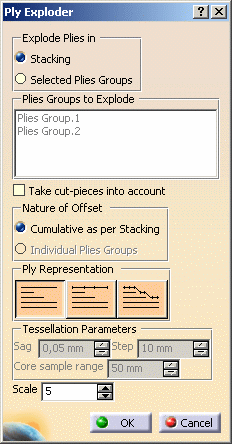
Shell Constant Offset
-
Enter a Scale factor by which each ply thickness is multiplied.
In our example we chose a value of 15mm. -
Click OK to generate the offset surfaces.
The result is an exploded view of each ply contained in the stacking.
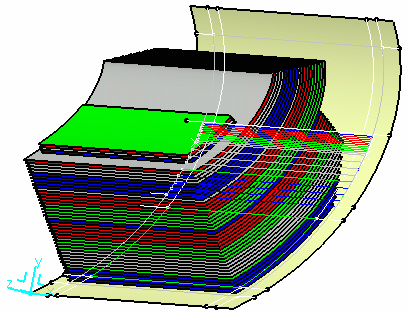
The exploded element is added under each ply in the specification tree.
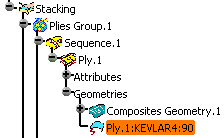
- Open the PlyExploder2.CATPart document.
- Click the Ply Exploder icon
 .
. - Select Take cut-pieces into account in the Ply Exploder dialog box.
- Use the default values displayed in the dialog box.
- Click OK to validate.
The offset surfaces of the cut-pieces are created.
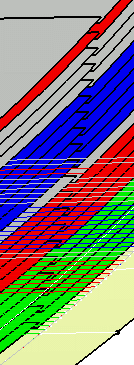
-
Open again the PlyExploder1.CATPart document.
-
In the Ply Exploder dialog box, select the values as shown below to generate an exploded view of plies groups 1 and 2.
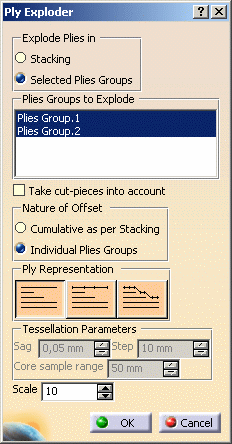
-
Select the nature of the offset:
-
Cumulative as per Stacking so that all plies
are offset sequentially through the stacking
or -
Individual Plies Groups so that all the plies
belonging to a plies group are offset sequentially through the group. The
offset value is set back to zero each time the system switches to another
plies group.
In our example we selected Individual Plies Groups.
-
Cumulative as per Stacking so that all plies
are offset sequentially through the stacking
-
Enter 10 as scale factor.
-
Click OK to generate the offset surfaces.
-
Right-click Plies Group.1.
-
Select Plies Group.1 object, then Hide/Show 3D contour.
-
Right-click Plies Group.2.
-
Select Plies Group.2 object, then Hide/Show 3D contour.
Now, only the exploded plies are displayed.
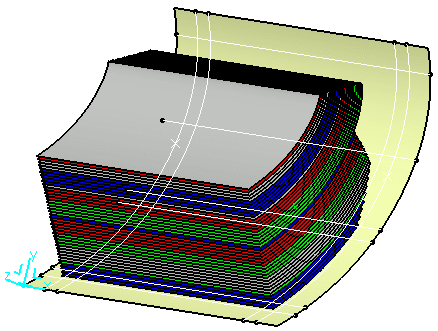
-
Select Plies Group.1 object again, then Hide/Show Exploded Surface.
The exploded surface of Plies Group.2 only is displayed.
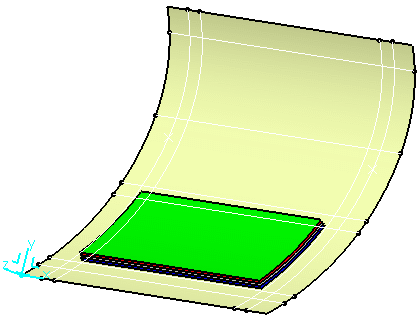
Tessellated Constant Offset
-
Open again the PlyExploder1.CATPart document.
-
Click the Ply Exploder icon
 .
. -
In the Ply Exploder dialog box, select Tessellated Constant Offset and set the values as shown below.
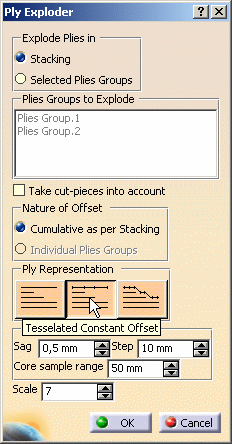
- The Sag and
Step parameters enable you to
refine the tessellation:
- the sag parameter defines the maximum distance between the geometry and the triangles making up the tessellated surface,
- the step parameter defines the maximum size of the triangles making up the tessellated surface.
- The Core Sample Range parameter defines the depth of the sampling for each point of tessellation perpendicular to the shell.
-
Click OK to generate the exploded view.
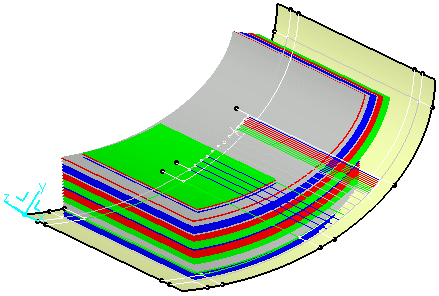
Draped Tessellated Surface
An offset of each point of the mesh is generated according to the real value of the core sample, multiplied by the scale factor.
This view provides a realistic 3D view of the stacking and allows you to create realistic section views in drawings.
-
Open again the PlyExploder1.CATPart document.
-
Click the Ply Exploder icon
 .
. -
In the Ply Exploder dialog box, select Draped Constant Offset and set the values as shown below.
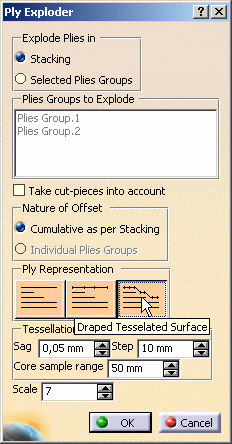
-
Click OK to generate the exploded view.
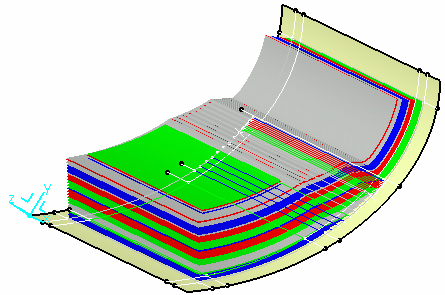
You are now going to create a section view of the part. -
To do so, go to the DMU navigator workbench, via Start>Digital Mockup>DMU Navigator.
-
Copy-paste the Composites part in the DMU Navigator workbench.
-
Click the Sectioning icon
 .
.
A section plane is defined on the part and a section view is generated.


![]()